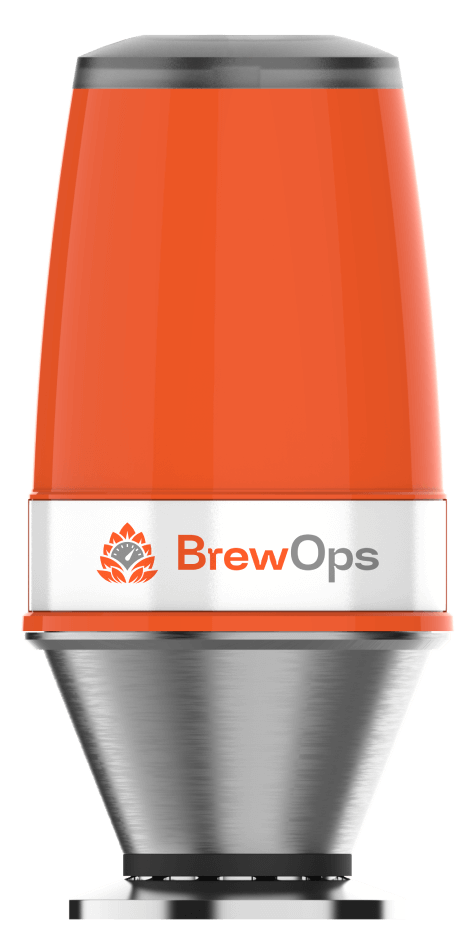Anything that helps brewers become more sustainable, more efficient, and less wasteful becomes a huge responsibility for the modern brewery. Carefully monitoring CO2 emissions during the purging process provides a shared benefit—saving an expensive resource, reducing the health impact on operators, and minimizing the brewery’s carbon footprint.
Automation allows brewers to do what they do best—brew better beer.
When brewers can precisely determine the time, energy, and amount of CO2 required during the purging process by using sensor technology, the result is more consistent beer and more sustainability.
Here are some practical tips and best practices for managing the beer purging process.
1. Minimize the Consumption of CO2 During the Purging Process
In the brewing industry, traditional approaches to purging tanks often depend on estimation and guesswork, which at best leads to inconsistent results and wastes precious carbon dioxide (CO2), and at worst can irreversibly oxygenate an entire batch of beer significantly reducing shelf life while creating unwanted flavors.
The problem with trying to minimize the consumption of CO2, or any type of purge gas, is that the gas is invisible and can’t be seen through the tank. In many cases, you also do not know whether you are starting with a fully oxygenated tank. Without a way to consistently measure the concentration of oxygen contained in the purge gas that is forcibly being exhausted from the tank, the total time required to purge the tank was historically merely a guess—kind of like filling up the gas tank in your car without the auto shut off.
Finding a consistent, repeatable standard operating procedure (SOP) can help to maintain consistency and traceability to minimize the amount of time required to purge a brew tank.
2. Use Automation to Significantly Reduce Purge Times
Brewers can significantly reduce purge times using a mobile, battery powered oxygen sensing device like BrewOps that is attached directly to the exhaust port of a brew tank. LED lights and mobile app notifications notify the brewer once certain thresholds are achieved, allowing the process to be easily and consistently repeated from tank to tank.
Low power industrial sensing technologies are mechanically packaged and implemented in a brewery environment to save operators time and resources. The BrewOps Purge, for example, is a ruggedized, mobile, easy to use, sensing device with intelligent software and algorithms that quantify and reduce purge times, saving brewers valuable time and CO2.
3. Use Technology Rather than Your Senses to Avoid Over Purging
The amount of time required to properly purge a beer tank has been hotly debated for years. Without measurement technologies at hand, brewers resort to over purging to protect their product, going by rough time, and eventually using their nose to “smell” the exhaust gas until it burns enough for them to think it is “done.” This common approach is wasteful, inconsistent, ambiguous, and can be dangerous.
The most common strategy to purge gas is to fill the tank slowly from as close to the bottom as possible which forces all of the oxygen up and out of the tank close to the top via the clean in place (CIP) spray ball. Piping that exits the top of the tank carries the gas down to floor level where pressure sensors and valves are typically located, or in this case automated sensors that measure the concentration of oxygen in the outgoing gas stream. Without access to sensing technology like the BrewOps Purge, most brewers use a time based approach taking tank size, gas fill pressure, flow rates, and target oxygen percentages into account. In a perfect environment where the tanks are of an ideal geometry, and the purge gas is guaranteed to be consistent this approach makes sense and leads to a mathematically backed conclusion that the bigger the tank gets, the longer it should be purged.
However, brewery environments are far from perfect. Tank geometries vary from manufacturer to manufacturer, and source gas used for purging is not guaranteed to be consistent in terms of pressure and flow rate. It is also not even guaranteed that the purge gas itself is free of oxygen contamination due to quality control issues upstream, or regulator and gasket leaks within the brewery plumbing systems.
Once a tank has been purged, it is typically filled with beer slowly while under pressure. This activity forces large volumes of gas out of the tank essentially in an upward plunging action with the denser CO2 gas blanketing the top of the beer. The remaining oxygen is physically separated by the layer of CO2, preventing it from dissolving into the incoming beer via what is scientifically known as Henry’s Law. Henry’s law states that the amount of gas that dissolves into liquid under consistent temperature is proportional to partial pressure of the gas above the liquid.
4. Use Automation That Is Simple, Inexpensive, and Intuitive to Implement
Large and small breweries can benefit from an easy-to-use, real-time oxygen monitoring solution, the BrewOps Purge. It is affordable, portable, and focused exclusively on improving the purge process. By partnering with actual brewers to design, test, and refine the concept, BrewOps was able to create a solution that is approachable, easy to use, and simple to integrate into standard brewery operating procedures.
The BrewOps Purge measures the exhaust oxygen in real-time, providing operators with a blinking light when “done” and push notifications to their mobile phones. Oxygen data is measured and logged historically, for the purposes of process review and refinement, allowing brewers to replicate tank after tank their own definition of the “perfect purge.”
Breweries worldwide use this technology to dial in their purges with actionable data, creating repeatable results.
5. Use Sensor Technology with Automatic Shutoff Valves to Prevent Even More Waste
The future of sensor technology includes the ability to program automatic shutoff valves, further increasing the reliability of preventing waste. It’s common knowledge that CO2 is a dangerous gas. Using way too much of it fills a brewery with pollutants that are harmful to the workers. When it’s released into the environment through ventilation and windows, then the outside environment suffers.
Save Energy, Time and Money with Purge Process Optimization
Breweries can significantly reduce energy consumption by automating the purge process. Sensor technology like the BrewOps Purge allows brewers to monitor oxygen presence and understand oxygen levels in real time. By optimizing purge pressures, brewers can determine the optimal tank pressure and make adjustments without compromising purge efficiency.
To learn more about how the BrewOps Purge reduces purge time and saves money, and to get pricing, please follow this link.



